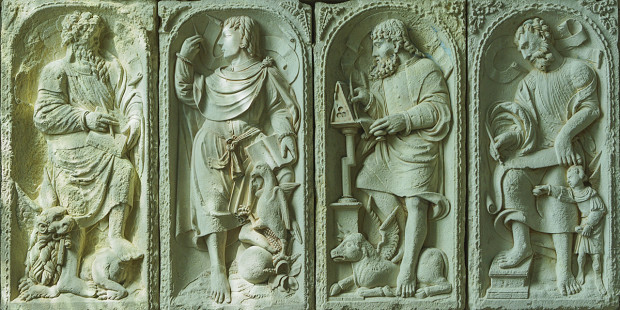We find images of apostles and saints in sculptures or stained-glass windows embedded in the architecture of churches, in paintings and holy cards, and sometimes even in secular architecture. All these statues and representations are the sign of a particular veneration linked to an era, an event, or the faithful’s desire to pay homage to their saints and martyrs, and to be able to count on their intercession before God.
To facilitate their identification, these representations are usually accompanied by attributes — such as an object, an animal, a plant — that characterize them: the palm and the crown for martyrs, the miter and the staff for a bishop, the book of the Gospels for the doctors of the Church, a model of the church for saints who founded religious communities, etc … This descriptive symbolism creates authentic bonds between the faithful and the works of art.
The number of statues and representations exploded at the end of the Middle Ages. To avoid running the risk of confusing them, especially in if the images’ deterioration over time should make them hard to recognize, the artists sometimes added more than one attribute. This can make identification more complicated, as different artists could pick different attributes representing different aspects of the saint’s life; indeed, the list of such attributes can be quite long. However, it is a joy when we can recognize a saint at first glance. Here, Aleteia offers you a short summary of attributes that can help you recognize the apostles. More information about the iconography of these and other saints can be found here, among other places.


